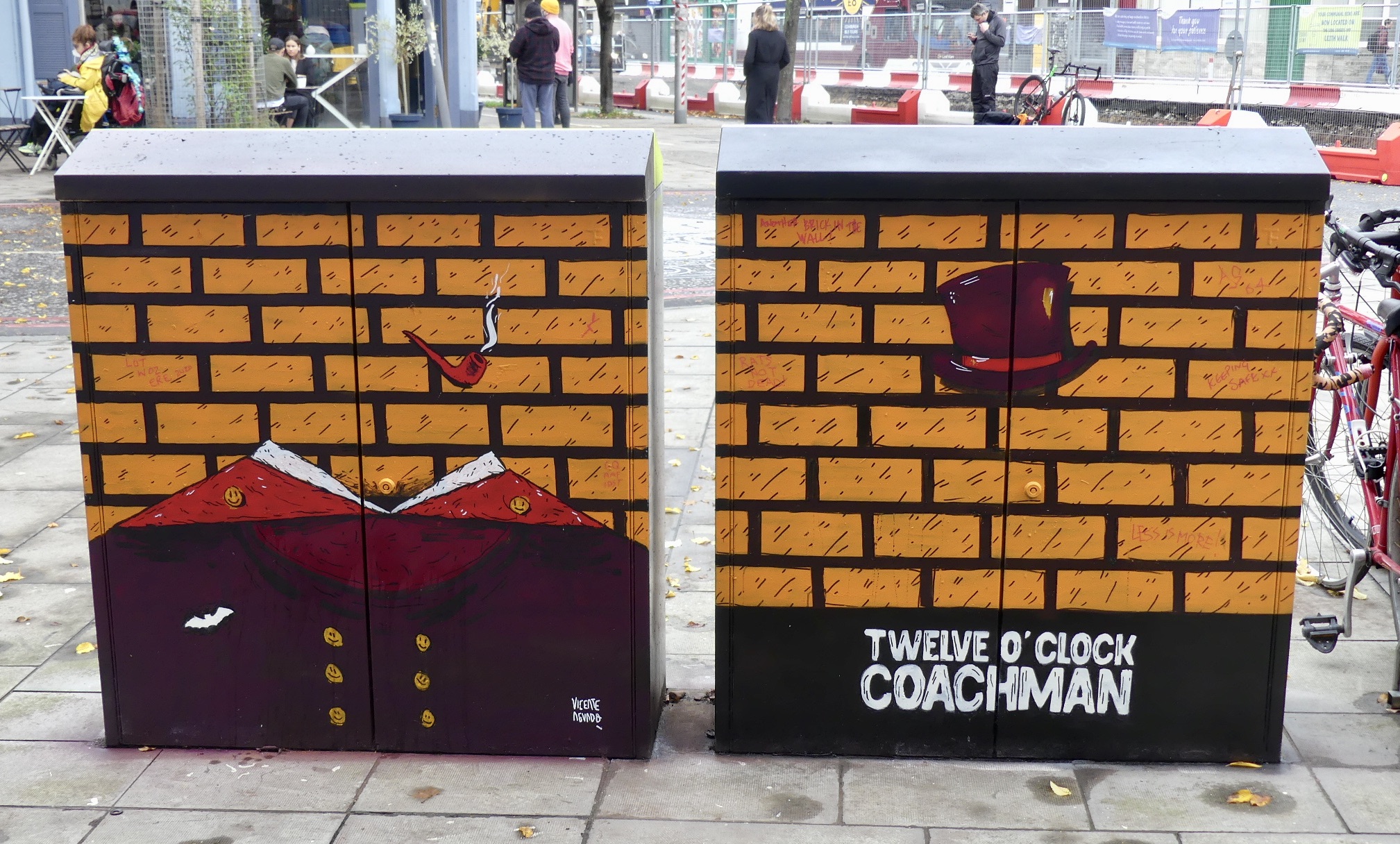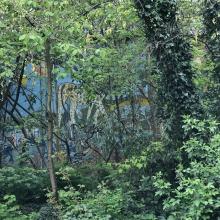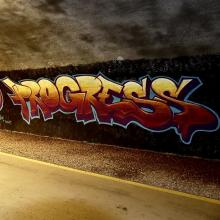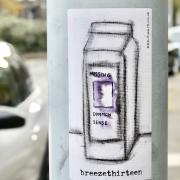
This intriguing enigma appeared in Bellevue recently.
The point seems to be that either a food product is so unhealthy that to consume it displays a lack of common sense. Or that a lack of common sense explains people’s failure to consume this healthy food product.
There’s a self-contradictory balance at play here, although other explanations are likely available.
Gentle breeze
Disturbing the viewer, provoking a response, is certainly part of the plan. The artist breeze thirteen says he has ‘only as long as it takes you to pass by on a train to get your attention’.
He describes himself as a retired graffiti artist, someone who got tired of dodging security whilst ‘bombing’ railway sidings.
He also grew disillusioned with adding art to backstreet walls when his bespoke, site-specific pieces were outnumbered by other people’s ‘badly cut out [stencil] designs. Designs that were mostly boring as fuck’.
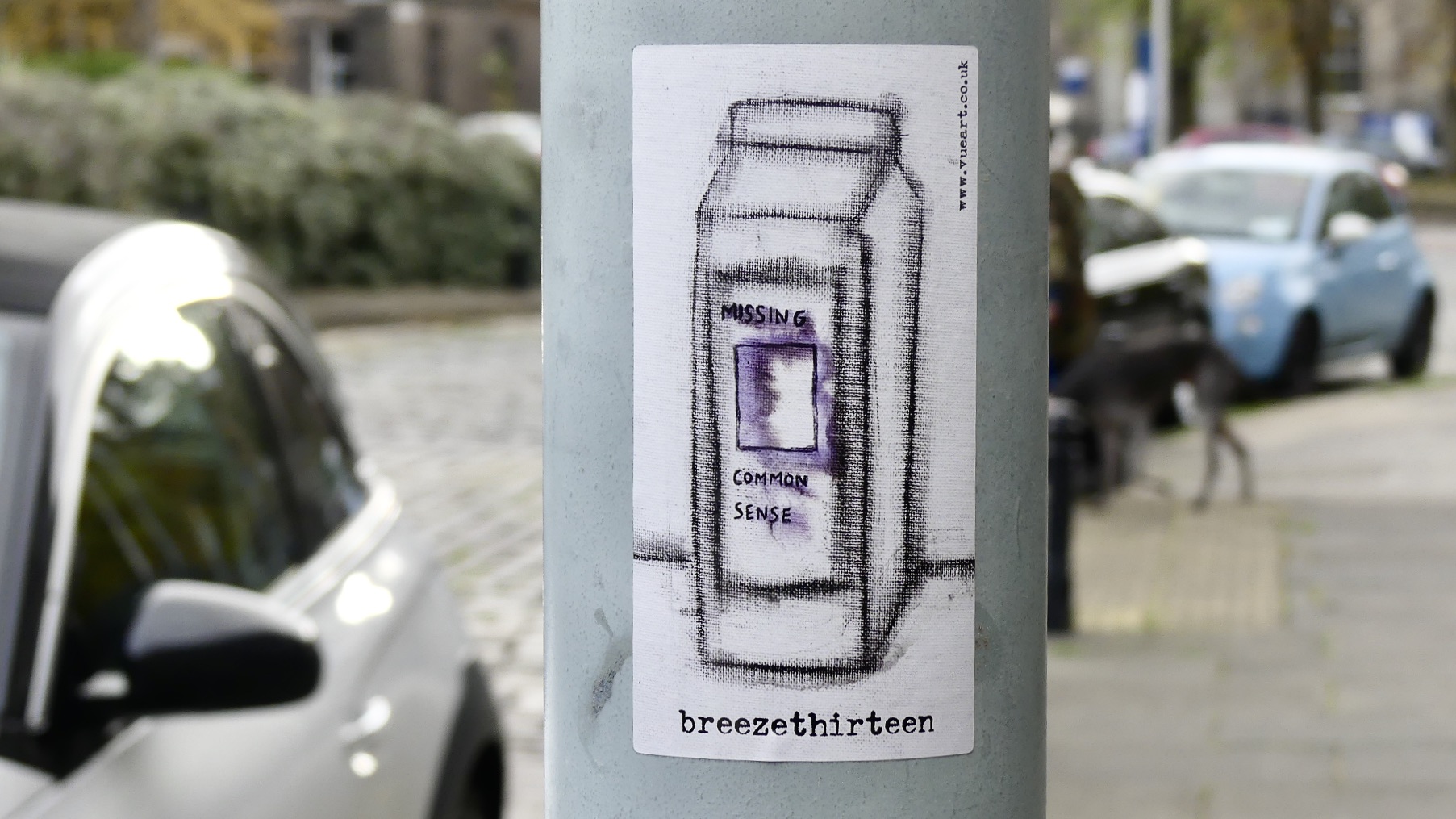
He now tends to work from home, where he paints peacefully in the company of an elderly cat called Moggy. Moggy features frequently in his work.
Acutely aware of, and averse, to today’s CCTV-monitored culture of surveillance, he says: ‘I am influenced by all the absurdity I see around me. Sometimes art can be a hammer. Sometimes a mirror. And sometimes art can just be a thing of beauty that warms you inside. Cos it’s boring being serious most of the time.’
The work this observer has seen by him is often cleverly executed and amusingly ironic. He generally hits the spot, though I'm not sure his latest 'Leith soothes' outside the Windsor Buffet and 'Leith heals' on Balfour Street are up to scratch by his standards.
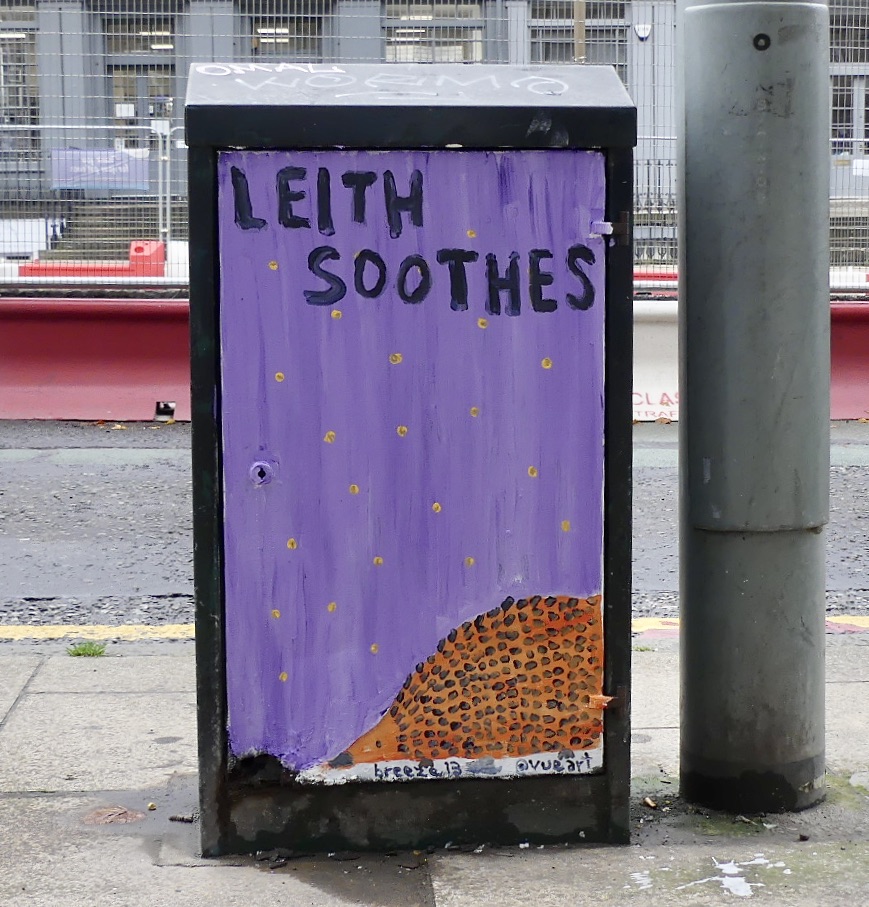
It's an ill wind
But despite his disdain for seriousness, breeze thirteen’s works are now capable of generating serious money. His signed, open-edition, giclee fine-art prints retail online at £40 each, and there are lots of them.
On the redrubble website, his T-shirts fetch between £19.69 and £26.26, his phone cases between roughly £10 and £28. You can order his pillow throws and tote bags, travel mugs, greeting cards, and water bottles. In fact, an impressive range of 29 breeze thirteen products is available, with prices varying from 92p to £56.62.
Breeze thirteen remarks, ‘Now I want to bomb every fridge door. Living room wall. Back of the bathroom door. That spark still burns inside of me, I just can’t run as fast as I used to be able to.’
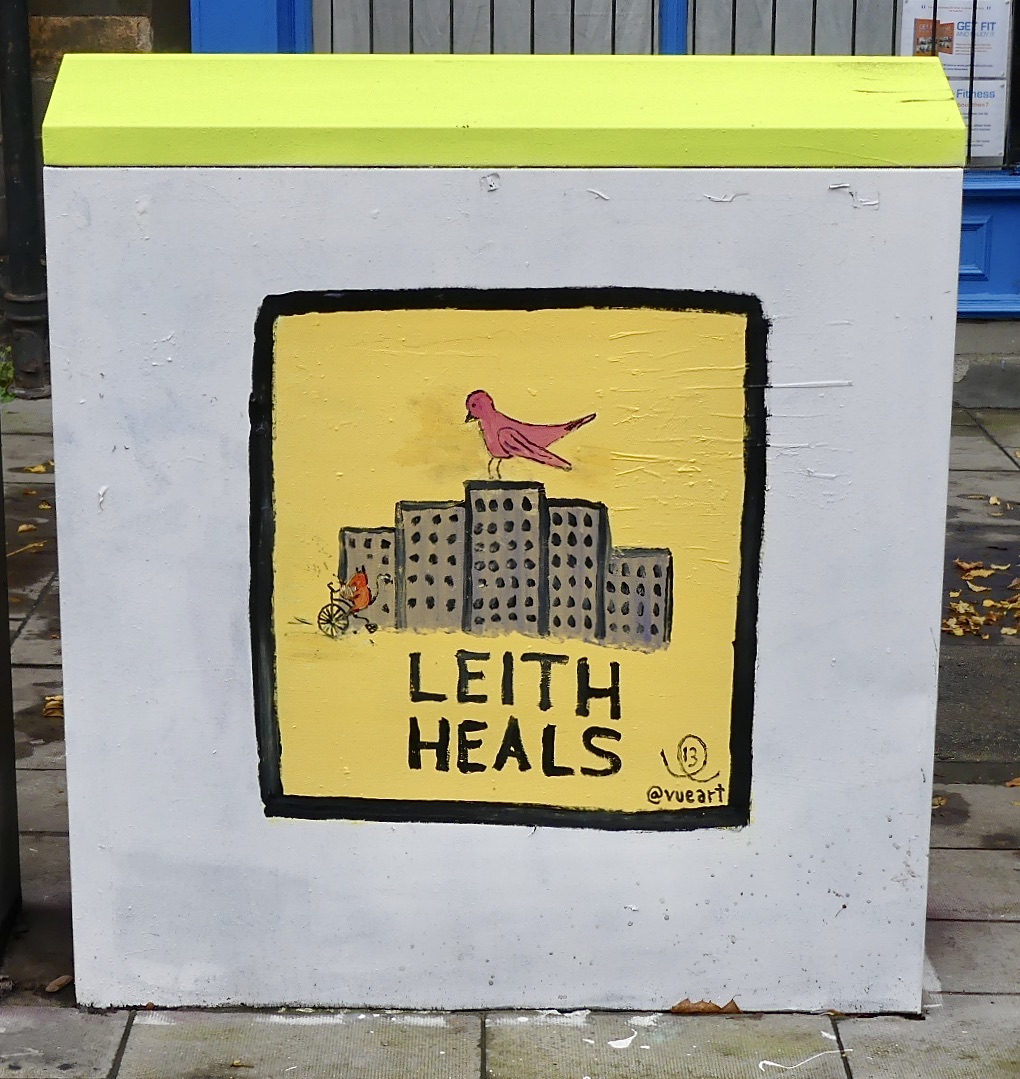
From margin to mainstream
Take another look at the design with which this article started. In small letters appears the website address of Vue Art. There are similar links on the Elm Row hedgehog, and on two works by Gratis Quo and Vincente Aguado at Balfour Street (see below).
VA is a limited company, established in 2018 by Leith-based co-directors Tia Moore and Charlotte Walters.
It’s an agency set up to provide ‘services to clients who have an interest in commissioning, owning and exhibiting street art, and to meet the needs of aspiring and established graffiti and street artists’.
VA currently represents 12 artists, including Elph (whom readers may remember overseeing the Scotland Street Tunnel grill back in 2009) and thirteen breeze, Gratis Quo, and Vincente Aguado.
These artists have different styles and motivations, but are now part of a surprisingly mainstream corporate structure.
On their behalf, VA offers unique private, corporate, and community events in Scotland. It can organise ‘pop-up exhibitions’ in interesting spaces, liaising between the artist and the owner of the space ‘to ensure a highly professional production’.
It even handles commissions, the current works for Trams to Newhaven/Edinburgh Council on utility boxes at Balfour Street and Elm Row being cases in point.
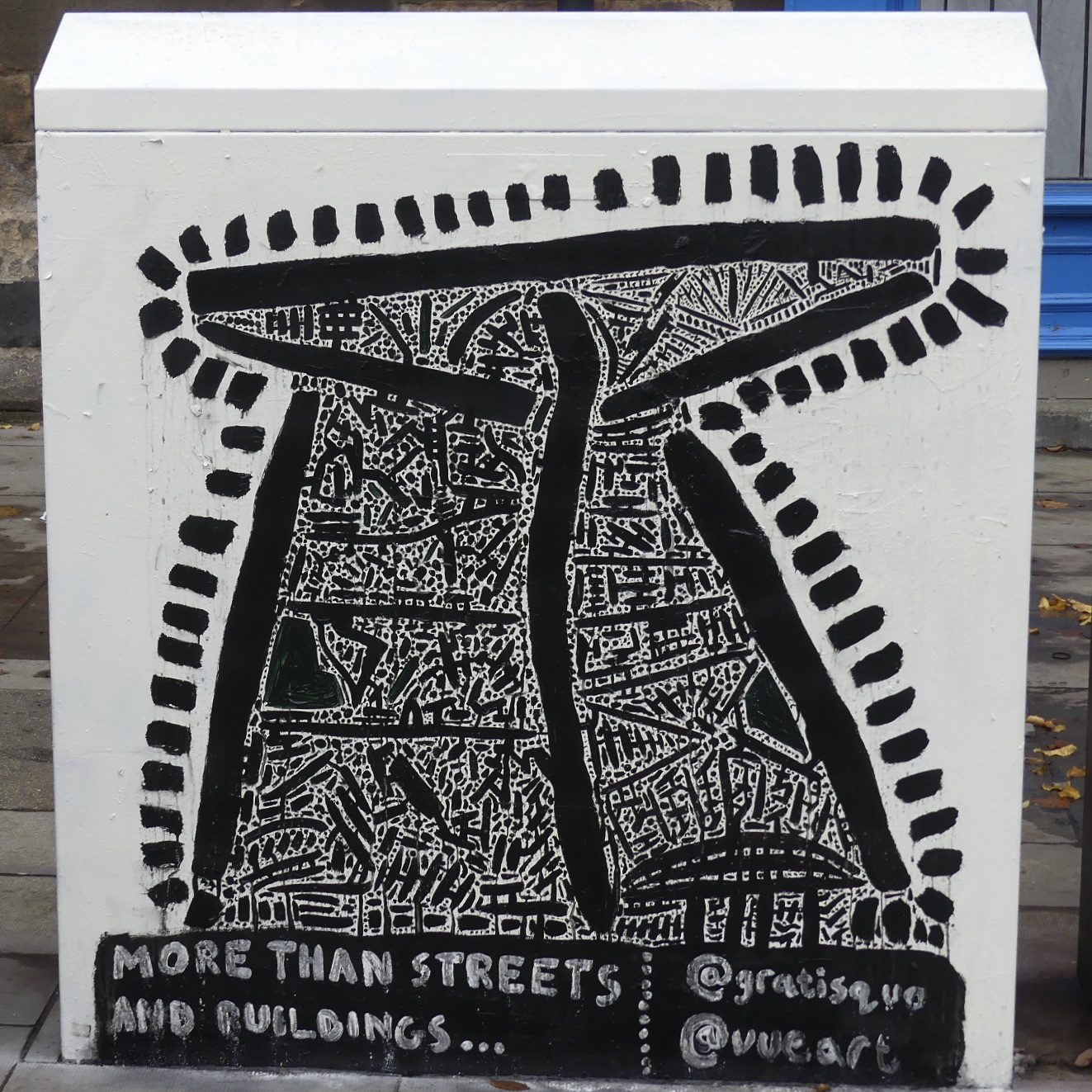
Yes, but no, but …
Now, all this is fine. Why would anyone begrudge artists earning a living, and earning a living without imposing upon the goodwill and amenity of other people? Good luck to them.
But, to this observer, there seems to be yet another set of self-contradictory balances here. Between the dissent of disaffected youth and the dead hand of local authority. Between street art’s edgy anonymous or pseudonymous social comment and mainstream commodification.
So while we may tolerate or enjoy well-worked art on the street, can we enjoy or tolerate it to the same degree when it is Council-approved? Or when, like the example we started with on a Bellevue lamppost – it is effectively advertising for private gain?
In short, if Vue Art Ltd wants to use publicly owned infrastructure like lampposts to market itself, should it perhaps liaise with the space owner – us – and pay for the privilege?—AM
Spurtle will return to the subject of street-art and Edinburgh Council next week. In the meantime, if you've got a view, tell us at spurtle@hotmail.co.uk or on Twitter at @theSpurtle
